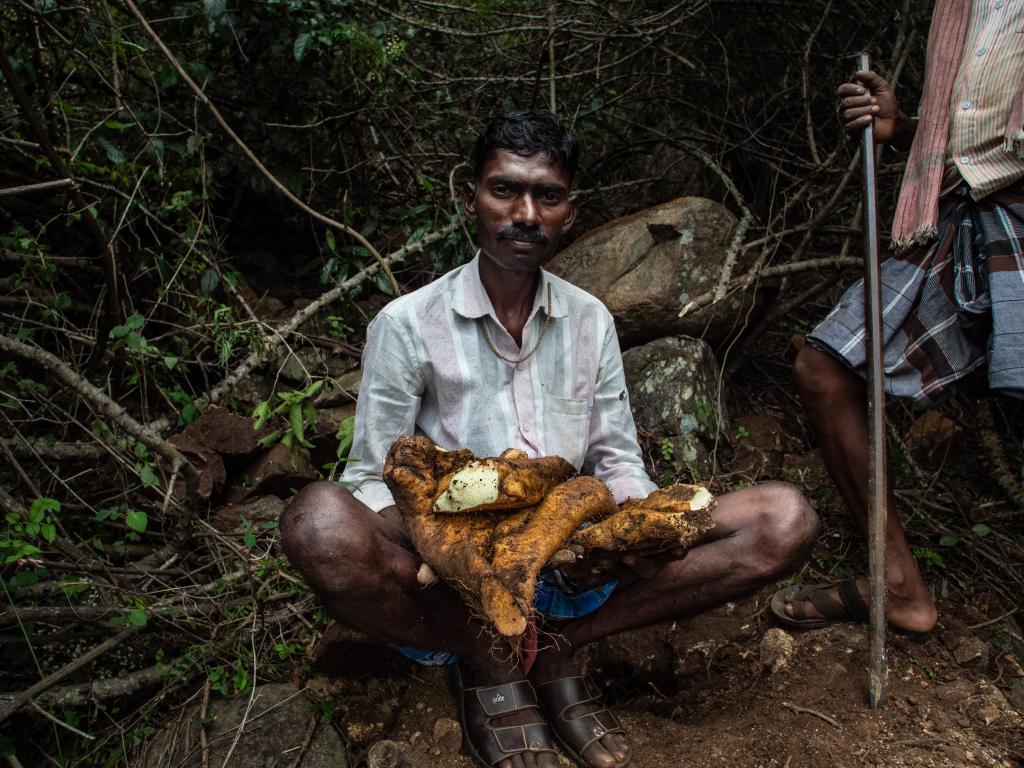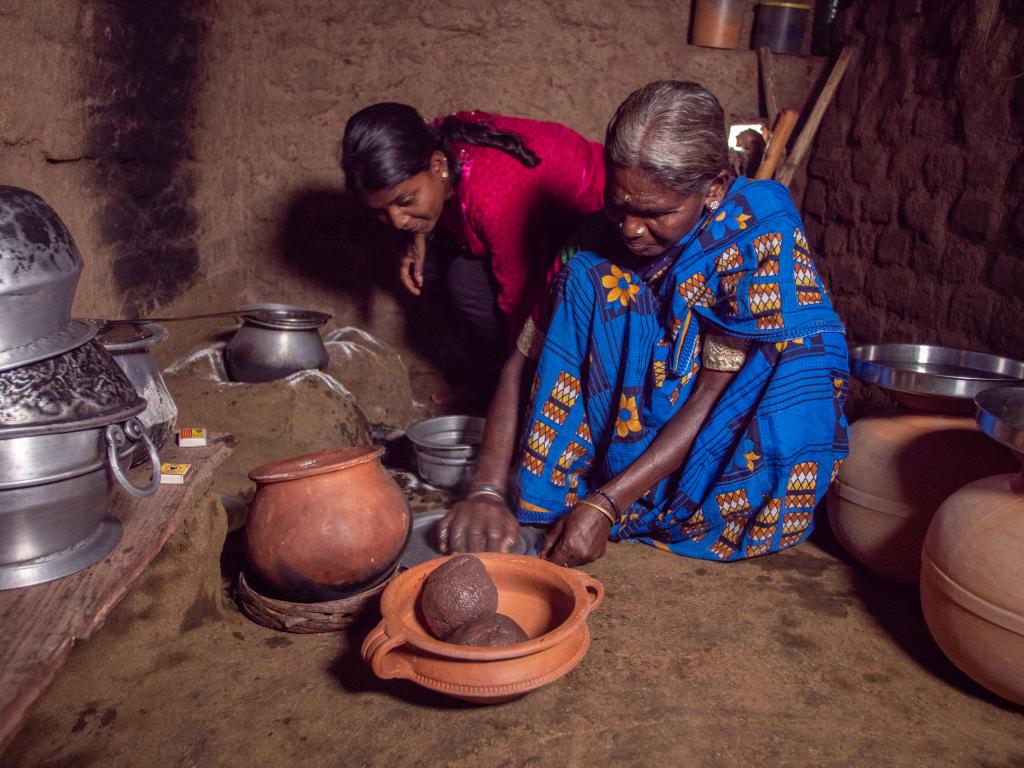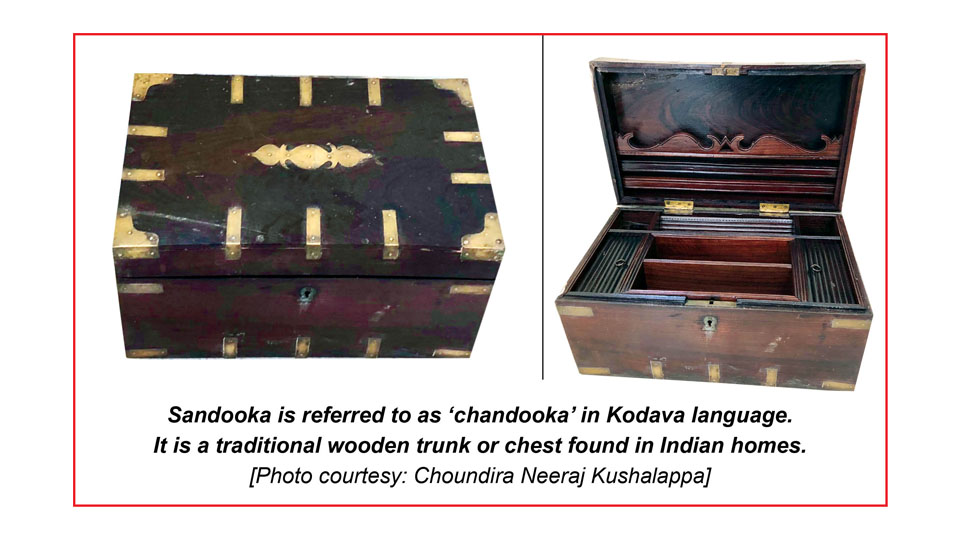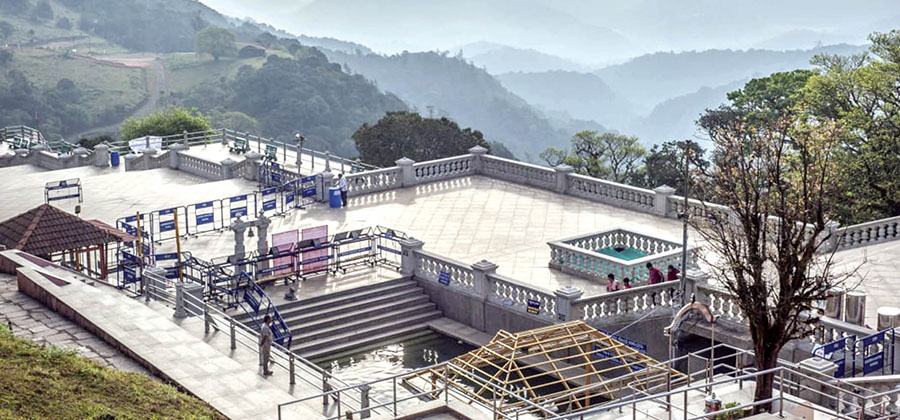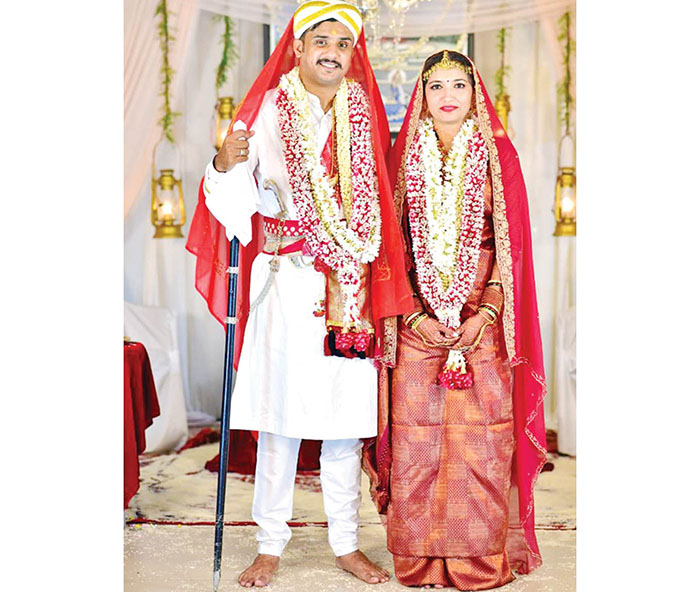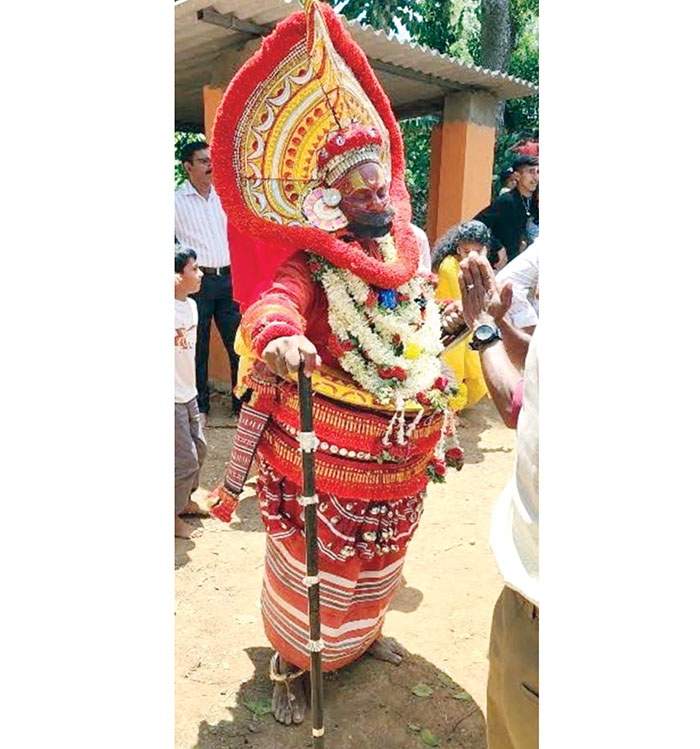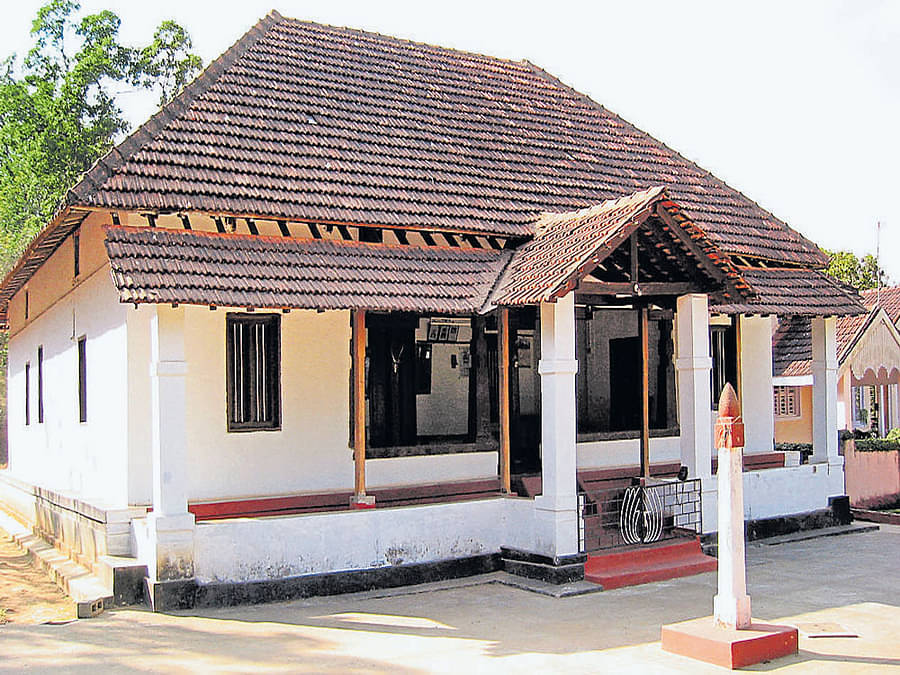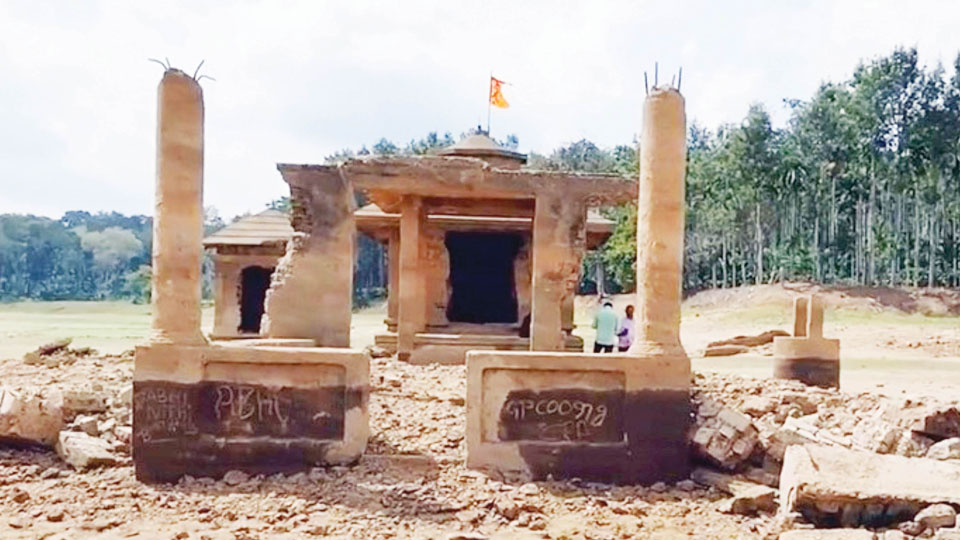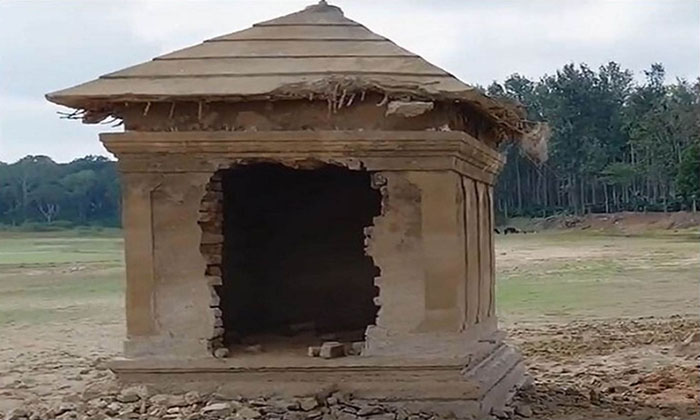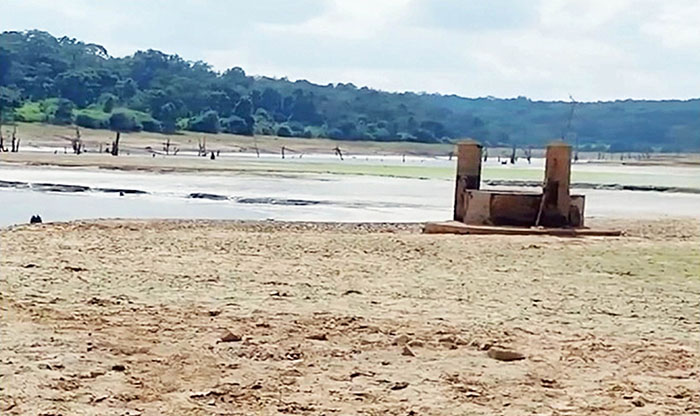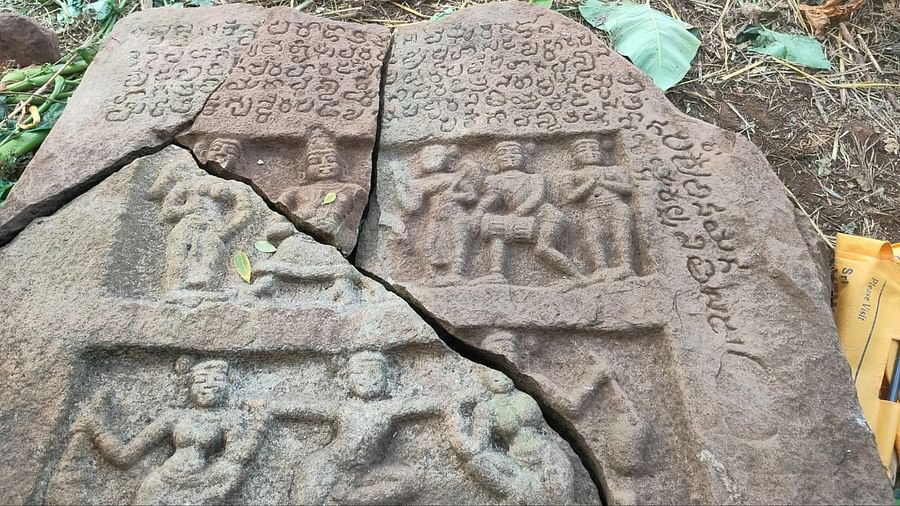In Kodagu, this performance is called theray. The performer readies himself with a colourful costume, (often red) and intricately done facial makeup along with head and neck accessories. Sometimes he wears a mask during the act.
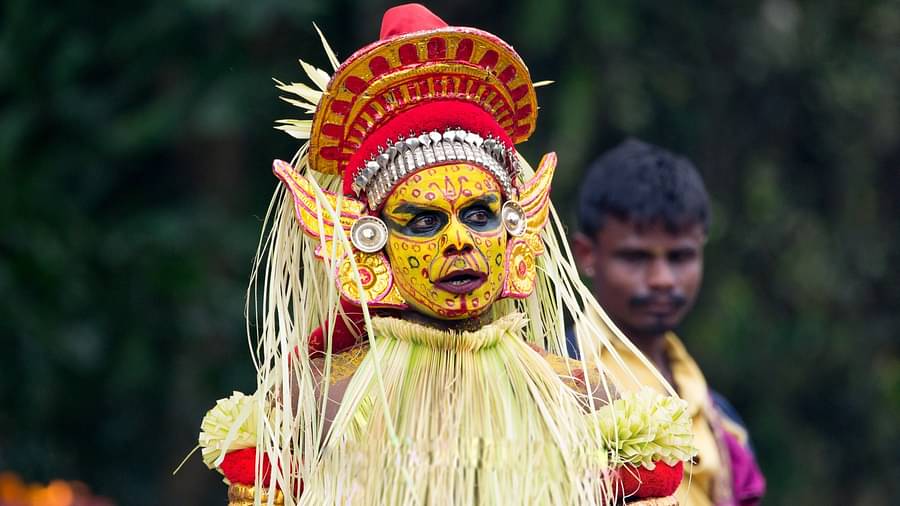
In southwestern India, the belief in gods and spirits ritually possessing a ceremonial performer who behaves as an oracle is common. Spirit worship is prevalent in Tulunadu (Udupi, Dakshina Kannada and Kasaragod), Kodagu and North Malabar. A performer in face paint and colourful costume invokes a deity or spirit into themself and then prances around, reminiscent of a Yakshagana or Kathakali dance performance.
This sort of ritualistic dance ceremony is known as kola or nema in Karnataka (especially in Tulunadu) and as theyyam in Kerala. The Tulu-speaking people in the Mangaluru region also call the practice bhuta aradhana, meaning spirit worship.
In Kodagu, this performance is called theray. The performer readies himself with a colourful costume, (often red) and intricately done facial makeup along with head and neck accessories. Sometimes he wears a mask during the act. There are members of a few communities from Kerala now settled in Kodagu (such as the Maleya, Banna or Panika), who perform theray.
Usually, one person who sings accompanies the performer, and another holds a wooden fire torch. During the ritual movements, the performer holds a mirror to his face and sometimes sits on a stool.
When a Kodava, or a Kodava speaker, is possessed, speaks as an oracle, and does not wear the theray costume and mask, he is called a thiralekaara and the performance is called a thirale.
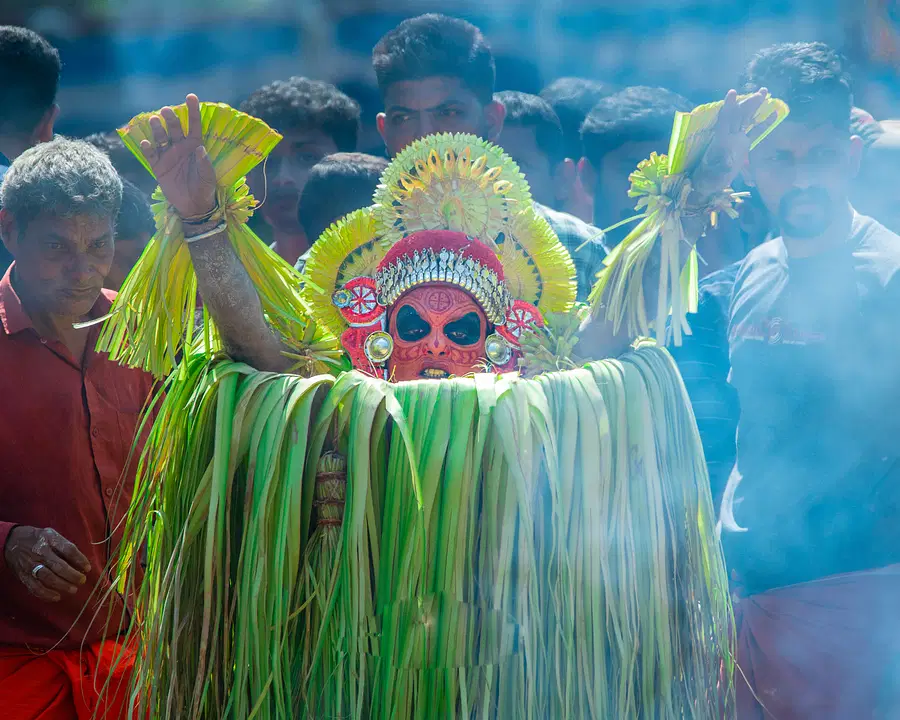
Popular deities like Chaundi (Chamundi) and her brother Vishnu Murthy are invoked during these performances. Vishnu Murthy represents a form of Narasimha, the half-man and half-lion.
During a Chaundi theray, the performer wears a long grass skirt and is dragged through a heap of burning coal. It was believed that this performance had the power to save devotees from smallpox and other diseases. The costume is painstakingly crafted with coconut fronds, making the appearance of the performer both subtle and dramatic.
There are also the five companion gods such as Kala Bhairava, Karibala, the young mischievous boy Kuttichatha, the comical girl Nuchchute and Kuliya. Pashana Murthy is another spirit-deity worshipped in Kodagu. Sometimes, a deity named Thotha is invoked before other performances. These are gods associated with the Malabar region who have been adopted into the spiritual pantheon of Kodagu.
Distinct deities
Interestingly, there are at least two animal spirits peculiar to Kodagu. There is the ‘Yeth theray’, where a bovine spirit is called upon and the ‘Nari puda theray’ where a tiger’s spirit is invoked. These are similar to the Panjurli boar spirit-related rituals of Dakshina Kannada, which are also performed in parts of Kodagu.
The therays take place annually or once every few years. Very often, they are organised by a person who made a vow to do it in exchange for divine grace. Few clans (like Nadikerianda, Iychettira, Bollepanda, etc) arrange these events in their ainmanes (ancestral homes). Most villages conduct therays in their village yards.
Kaliat Ajjappa
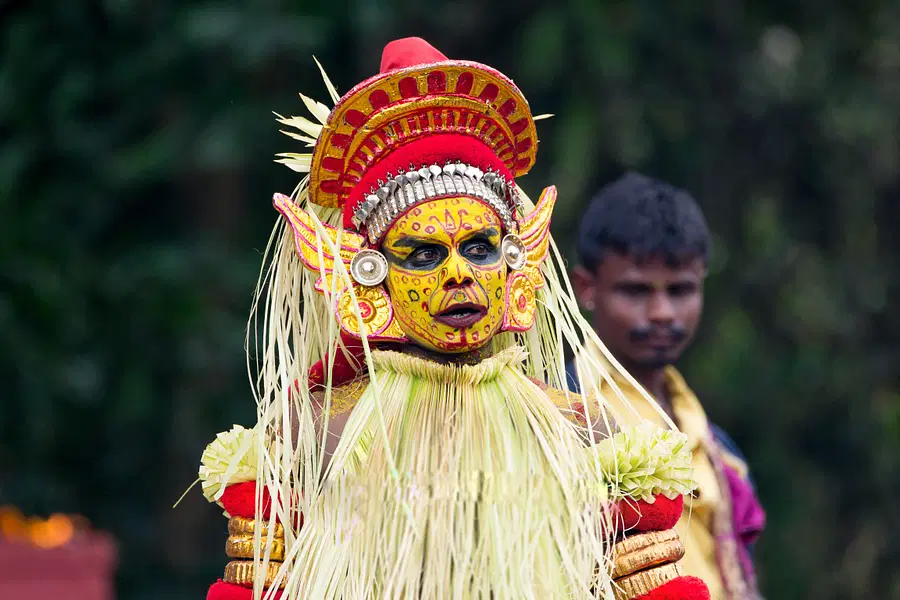
Another spirit invoked during the therays is that of Ajjappa, who is widely regarded as a local hero. His mention can be found in the Manual of Coorg (1870), where Reverend G Richter mentions ‘Kalyatanda Ponnappa, or simply Kaliat-Achchappa’ of Naalnaad. He is remembered in folk songs, and worshipped by the people of Coorg.
Ponnappa was much admired for his marksmanship and feared for his prowess in occult magic. His popularity grew and soon, he became the leader of Naalnaad. The legend goes that Karnayya, the head of the neighbouring region, was raising a secret army against the Haleri dynasty’s king at that time. Karnayya wanted Ponnappa to join forces with him. But Ponnappa refused and acknowledged the Haleri king as his overlord.
Alerted to Karnayya’s plans, the king assigned Ponnappa the task of countering him. Ponnappa was given the king’s weapons and an army of 500 men. He was able to counter Karnayya successfully.

But eventually, Karnayya tricked his way into drugging and cornering Ponnappa. The hero managed to fight off his enemies, despite being outnumbered. It is believed that Ponnappa invoked the ten spirits of the netherworld in the battle. However, he was mortally wounded by the arrows.
Despite his injuries, he limped and dragged himself to the nearby shrine. He remained there for some days where he later breathed his last. The place where he died is revered as a sacred spot even to this day.
The king pursued Karnayya relentlessly and finally defeated and killed him.
This period can be dated to the time of Vira Raja’s reign (circa 1600), when some of the Kodagu Nayakas, such as Karnayya, were subjugated and put to death. From that time onwards, the Haleri dynasty was firmly established in Kodagu.
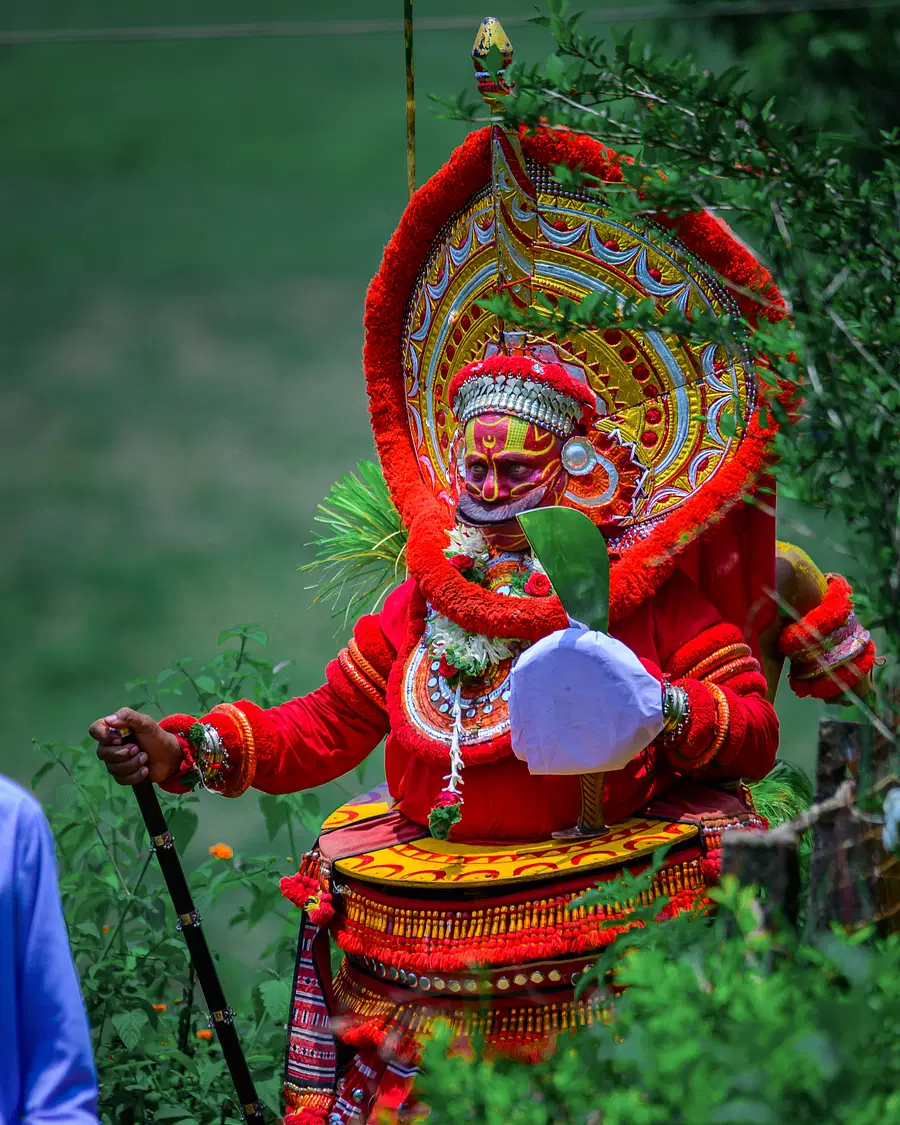
It was after his death that Kalyatanda Ponnappa was called Kaliat Achchappa or Kaliat Ajjappa. In Kodagu, there are several shrines dedicated to this folk hero. One of the most famous among them is his samadhi (memorial) near the temple of Makki Makki Sarthavu. This spot is claimed to be the place where he passed away.
source: http://www.deccanherald.com / Deccan Herald / Home> India> Karnataka / by Mookonda Kushalappa / January 18th, 2024
